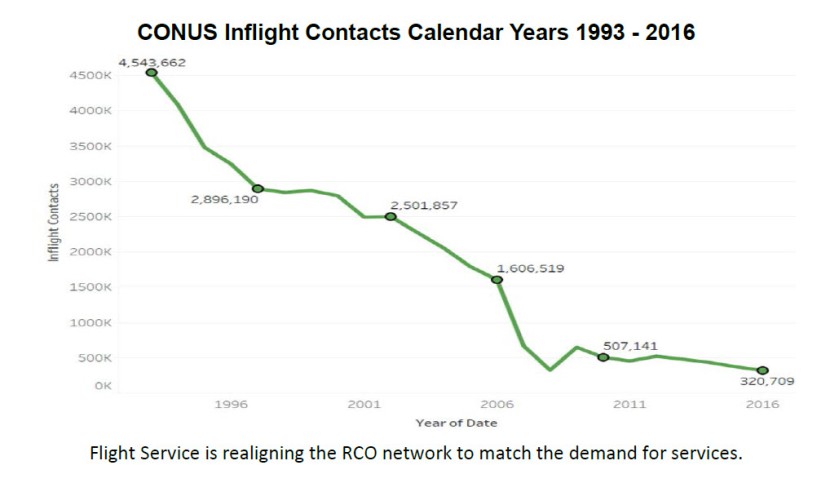The network of remote communications outlets (RCO) used by FSS is shrinking, in part because of the elimination of Flight Watch, but mostly due to a dramatic drop in radio contacts between pilots and FSS.
According to documents at the FSS website:
Our goal is to retain a minimum of 90% of the current RCO coverage at 1,000 feet AGL. Graphical representations of RCO coverage areas at different altitudes are available on our website…The removal of the frequencies is scheduled to begin in the fall of 2017 and be completed by the end of 2018.
FSS plans to retune some RCOs from 122.0 (the frequency formerly used for Flight Watch) to the most common FSS frequencies (122.2, 122.3, 122.4, 122.5 and 122.6).
To see a list of RCOs and those scheduled to be decommissioned, open the Microsoft Excel workbook available at the FSS website, here.
More Evidence of Adoption of Apps
According to an FAQ document on this topic (PDF), the number of radio contacts with FSS has dropped from about 4.5 million in 1993 to about 321,000 in 2016.

If you want evidence that pilots have rapidly adopted apps and avionics that provide near-real-time weather in the cockpit, and that they use web-enabled devices and services to brief and file flight plans, this graph may be exhibit one.


